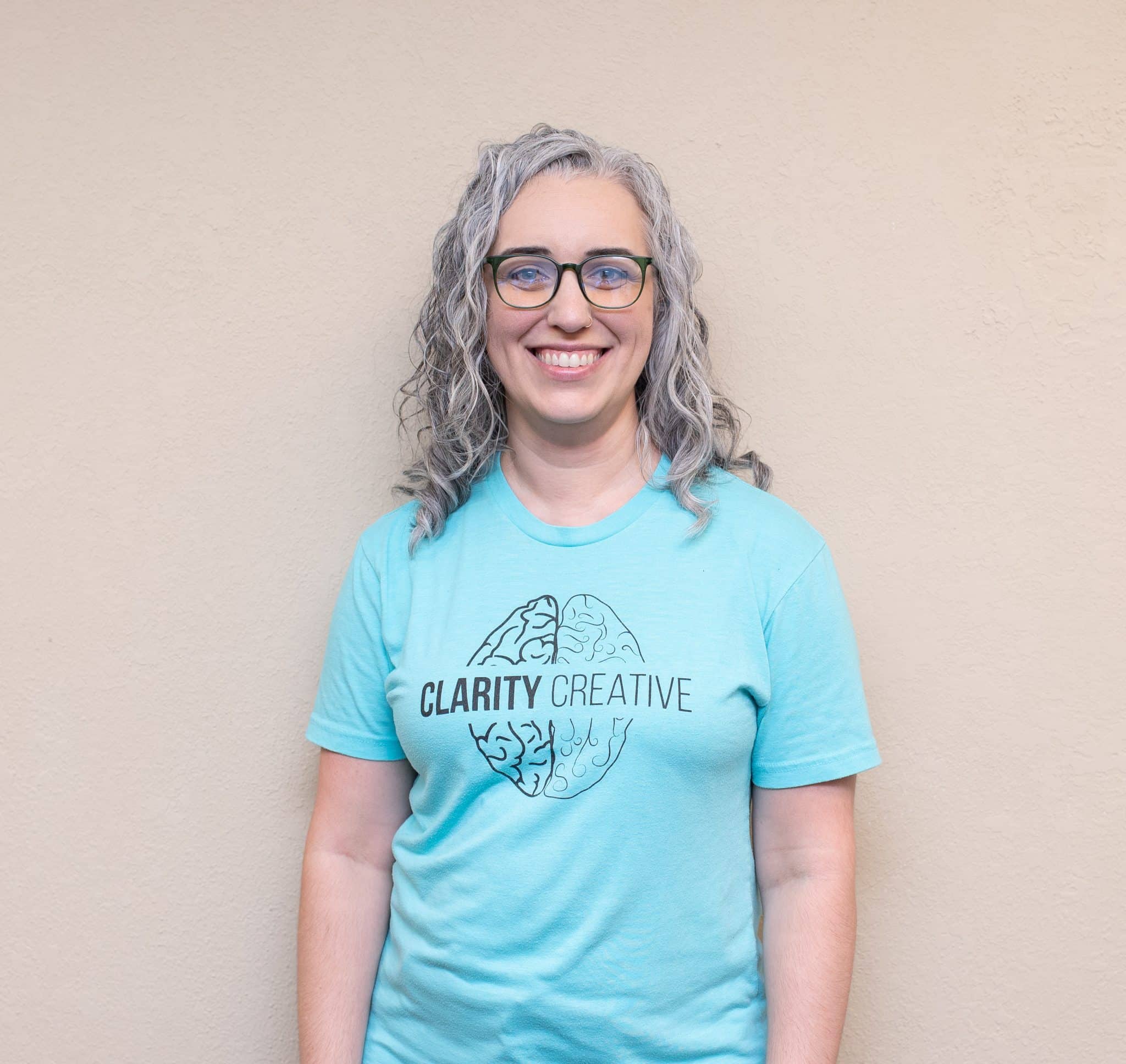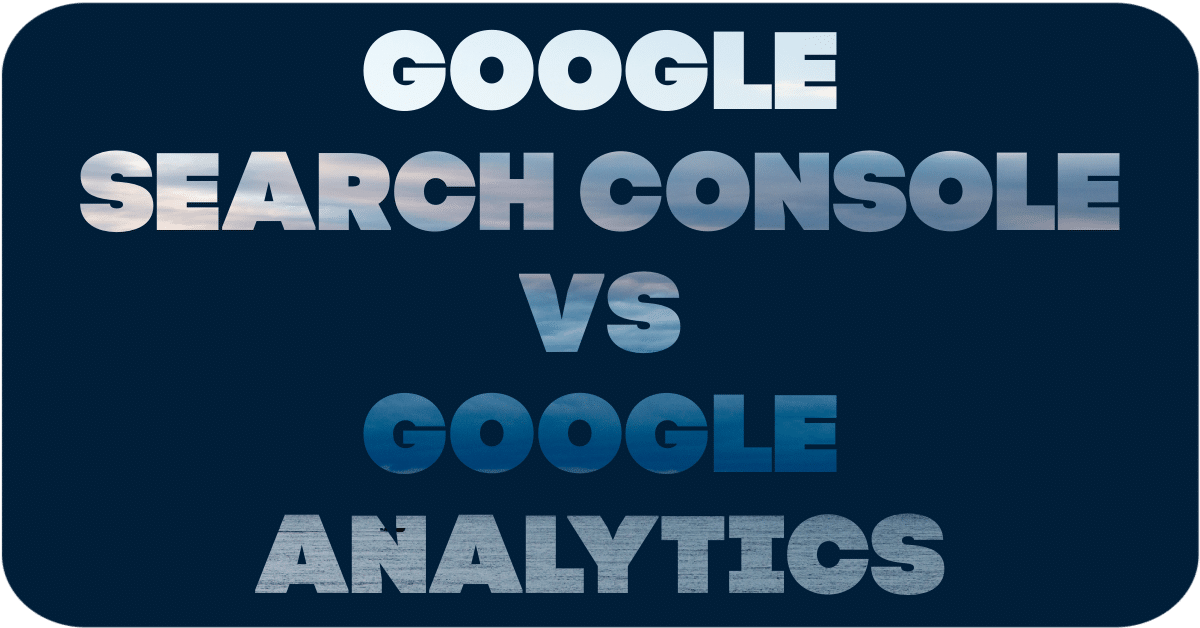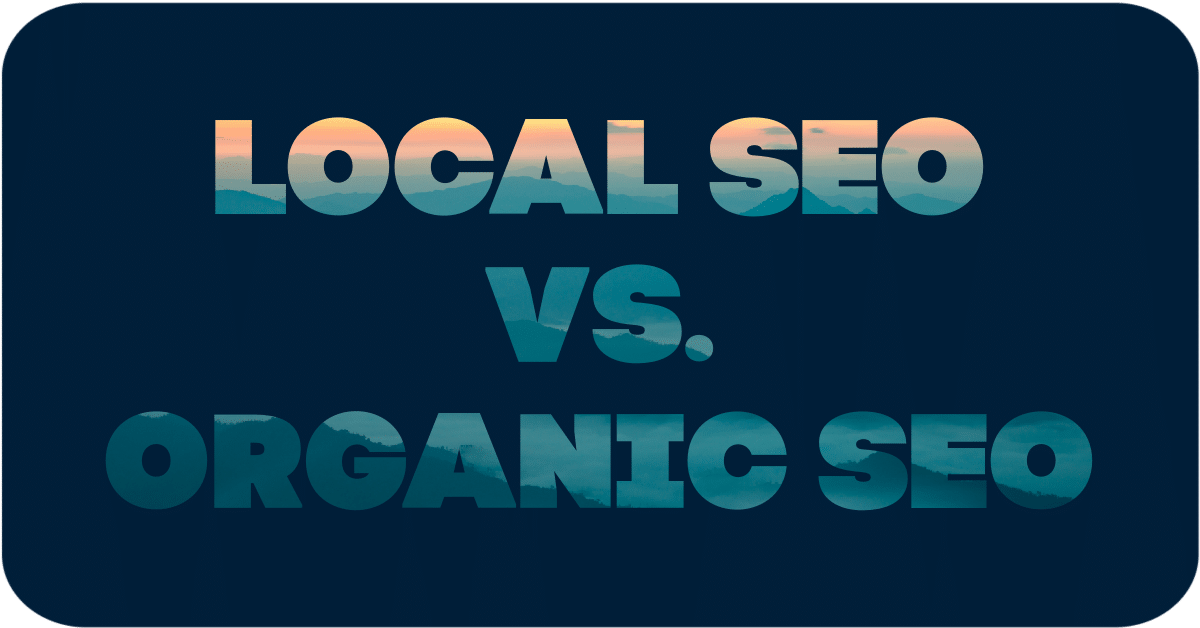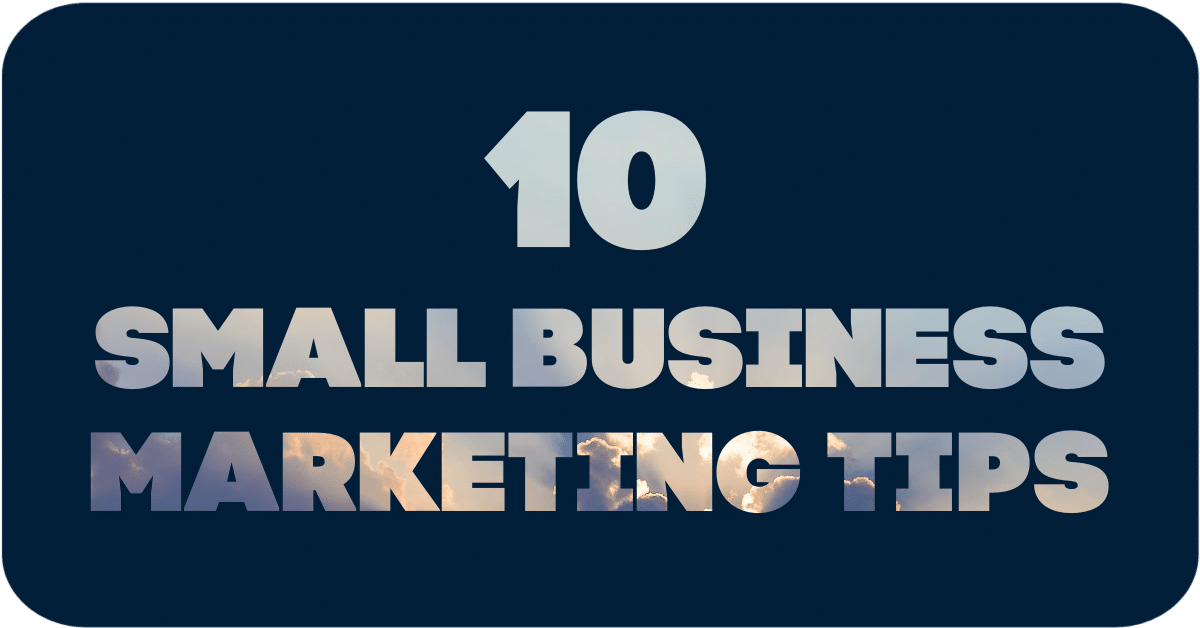Here at Clarity, we eat, sleep, and breathe small business.
We read articles; listen to podcasts; and attend meetings where we talk marketing trends, keywords, and SEO practices. We know what we’re talking about (whew!), but we realized that you—our readers and clients—might not. So we put together a glossary of buzzwords and concepts for those who want to understand what all those words mean when they show up in a blog post or proposal.
A
AdWords: An advertising service offered by Google allowing people and businesses to create internet ads that will be shown on the computer screens of relevant users. The creator of the ad offers a certain amount of money (typically .50-$1) for each time a user clicks on an ad.
Alt text: A description of an image that tells Google and other search engine spiders what the image is all about so that the search engines can rank and categorize that image appropriately.
Analytics: A program that tracks activity (number of views, number of clicks, amount of time spent on site, bounce rates, etc.) on your website. (Google is the most popular and a must-have for your business website.)
Anti-virus software: Software that protects your computer from computer viruses. (We use Avast.)
App/Application: A piece of software (typically downloaded to a mobile device). Read more about our position on mobile apps here.
Asana: Clarity’s favorite task management software. (It’s also another word for “yoga position,” but that’s not relevant now.) You can read our review of it here.
B
Backlink: A link to a website that is posted on a separate website, usually in an attempt to generate more traffic. (See Link building.)
Banner ad: A click-able ad that runs across the top portion of a website. These can be everything from animation gifs or videos to static images.
Blog: A type of website that is regularly updated with content. Keyword here is “regularly.” Blogs are like a digital journal or newspaper where the topic is anything you choose. Read more about blogging for your business here.
Blog platform: The software, website, or service that helps users create and run a blog. (WordPress, Blogger, Tumblr, Drupal, Joomla are the most popular.)
Blog post: An article posted to a blog. Blog post articles can be in a wide range of formats, from how-to articles to news pieces.
Bounce rate: The rate at which website visitors leave a website without interacting with the page.
Browser: A program used to view the internet, such as Firefox, Chrome, or Internet Explorer.
C
Clicks: The number of times web viewers have clicked on a link. Google Analytics might use this to determine how many visits your page received over a certain period of time. Google Adwords might use this to see how many times someone clicked on an ad.
Code: A computer language used to build websites, computer software, or apps. (Like an alphabet for your computer.)
Consultant: An expert contracted (but not permanently hired) by a company to advise on and/or improve that company. You can read more about our stance on consultants here.
Content: Also known as “information,” content includes blog posts, infographics, videos, podcasts, and more. (See Valuable content.)
Content marketing: Any marketing strategy designed specifically to create and distribute valuable content in an effort to get someone to perform a certain action (like click a link or buy a product).
Content optimization: The processes a content creator uses to try to make his or her content more visible to search engine spiders. We wrote about the differences between content optimization and SEO here.
Content writer: A person who writes content for the purpose of informing a reader.
Copywriter: A person who writes content for the purpose of enticing a reader to perform a certain action (like click a link or buy a product).
D
Domain name: See URL.
E
E-commerce site: A website that sells a product, a service, or content in exchange for currency. This is different from a blog, for instance, that provides information free of charge.
F
G
Guerrilla marketing: Creative, unconventional (and typically low-cost) methods of increasing a business’s exposure. Examples include eye-catching ads, giving away items with your company’s logo, or social media contents and campaigns.
H
Headline: The title of an article or blog post.
Hosting: Providing the digital space (on a physical server) that 1) provides a virtual space for a website to exist and 2) points your domain name to the website so the internet can locate it. Picture a web host as a landlord who owns a building and your website is an apartment that you rent within that building, complete with a legal address.
I
Impressions: How many times a particular ad appears on a screen (whether or not anybody actually sees or clicks on it). This term gets used a lot when discussing AdWords campaigns.
Infographic: An image used to convey information, typically in a chart form.
Internet Service Provider (ISP): A company that provides users with an internet connection for a fee. (Popular ISPs include AT&T, Comcast, and Bright House.)
J
K
Keyword: A particular word or phrase that designates the nature of a web page or blog post. Keywords are selected based on their popularity as search terms. For example, the keyword “blog post ideas” might be chosen for a blog post titled “How to Generate Blog Post Ideas.” (See Long tail keyword.)
Keyword stuffing: Using a selected keyword so many times in a piece of content that the content no longer sounds natural. This used to be a popular SEO tactic, but has (thankfully) fallen out of favor.
L
Link building: Posting a backlink to your web page on another web page in an attempt to generate more traffic.
Long tail keyword: A longer, more descriptive keyword. For example, a long tail keyword might be “residential maid orlando” instead of simply “maid.” Long tail keywords help bring in a more specific clientele and can be easier to rank well for on search engines.
M
Marketing: A promise (whether that promise is implied, directly stated, or simply expected) to deliver a certain product, service, or emotion. Print ads, customer service, branding, web design, and price are all “marketing,” because they all contribute to how current and potential customers see your business. For more on this subject, we highly recommend Scott Stratten’s book, UnMarketing.
Marketing strategies: Methods for increasing exposure and/or getting people to perform a certain action. Marketing strategies should be Trackable, Targeted, Timely, and Trendy. Find out if you’ve been focusing on an outdated marketing strategy here.
Meta description: The description of a web page or blog post that describes that page or post to search engines and readers. Meta descriptions should include keywords, but they are not keywords themselves. They can be either a summary of the blog post or (ideally) an interesting description that makes people want to read on.
Mobile app: see App
Mobile site: A website created specifically for viewing on a small-screened mobile device, such as a cell phone or tablet. (See Responsive site.)
N
Net neutrality: The idea that access to the internet should be the same for all users. Content should not be blocked, speed should not be slowed down, and companies should not be able to pay ISPs for preferred treatment. You can read more about net neutrality here.
O
OC/DC (Optimizing Content for Discovery and Conversion): The act of combining the methods of SEO and content optimization to provide maximum exposure and readership of a piece of content. To find out the differences and how to make these strategies work together, click here.
P
Page Rank (PR): How relevant a web page is to a given search term. Web pages with higher page ranks will be listed higher up on the search results page than those with lower ranks. Each search engine has its own algorithms for determining page rank.
Plugin: A tool used to enhance the security or usability of your website or blog. Plugins are typically neither seen nor noticed by visitors to a website, but can be invaluable to the website’s owner. (Our favorites are the SEO by Yoast Plugin for WordPress, Backup Buddy, and Sucuri Security.)
Podcast: A digital audio file that is made available to download or listen to online, typically in a series. Think of a podcast as being a blog that you listen to instead of read.
Popup ad: An ad that “pops up” on a viewer’s computer screen when visiting a web page.
Product: An item (digital or tangible) that is sold in exchange for currency. (See Service.)
Q
Say Hello, and Let's Get To Work Together
R
Responsive site: A type of website that automatically adjusts to fit the size of the screen the viewer is using. Unresponsive websites will not be easily viewable on a screens of varying sizes, such as mobile devices. (See Mobile site.)
ROI (Return On Investment): The amount of money gained as a result of an investment. You can read more about this here.
RSS (Really Simple Syndication) feed: A stream of subscribed-to content (usually blogs) delivered automatically to an RSS Reader.
RSS (Really Simple Syndication) reader: A web page or software used to deliver RSS feeds. (We like Digg.)
S
SEO (Search Engine Optimization): A way to manipulate text and code to make a website or web page more visible to search engine spiders.
Search engine: A program used to search the internet for content, as defined by a search term. Google is the most popular.
Search engine algorithms: The computer code that search engines use to determine which results to provide for a particular search term. Algorithms are highly proprietary and change often.
Search term: A word or phrase selected by a web user to search the internet for content. (See keyword.)
Service: An action that is performed in exchange for currency. (See Product.)
Slider: A web page feature consisting of a series of rotating images.
Social media: A website, app, or program that allows users to digitally share text, videos, audio, images, and other information with other users. Popular social media platforms include Facebook, X, and YouTube. Find out more about properly leveraging social media for your business here.
Social networking: The act of using a social media platform to meet and interact with other users.
Spiders: The code or program by which search engines crawl the internet for content.
T
Three Lists to Freedom: Developed by Chris Ducker; creating the Three Lists to Freedom is a way for people to find ways to take more off their plate by delegating. The three lists are 1) Things You Don’t Like To Do, 2) Things You Can’t Do, and 3) Things You Shouldn’t Be Doing. If you think you need to create a list like this, read more here.
Trust gap: The ratio of cost to risk experienced by potential customers of a business. A contractor has a very large trust gap, because a customer risks a lot (thousands of dollars, letting a stranger into her home, allowing that stranger to tear her house apart and rebuild it properly) in hiring them. A cupcake shop might have a small trust gap, because both the cost (maybe $5?) and the risks (a not-so-tasty cupcake) are very low. Businesses with a large trust gap need to consider this when marketing their business.
U
URL (Uniform Resource Locator): Also known as a web address or domain name, a URL is the letters and numbers that are typed into a browser to locate and display a certain website.
User experience (UX): The experience (whether positive or negative) that a user has while viewing a web page or piece of content, usually regarding the ease of use. If your consumer of choice is a human (hint: it is), you should focus on making the user experience as positive as possible.
V
Valuable content: Content that is helpful, informative, or entertaining to the viewer. Content that is valuable to the consumer will be viewed as having been worth the time, effort, or money needed to consume it.
W
Web address: (See URL.)
Web design: The act of designing a website in regards to layout, language, and aesthetics. (See Web development.) You can read more about the web design process by reading our Web Design 101 series.
Web development: The act of building a website using code. (See Web design.) Read more about the differences between web design and web development here.
Web page: A single page within a website.
Weblog: See Blog.
Website: A digital location on the internet that contains one or more web pages.
X
Y
Z
Clarity Creative Group is a web design & internet marketing company located in beautiful Orlando, Florida. Rejected terms from this glossary include “Myspace,” “CD-ROM,” and “floppy disc.”
Save
Save


